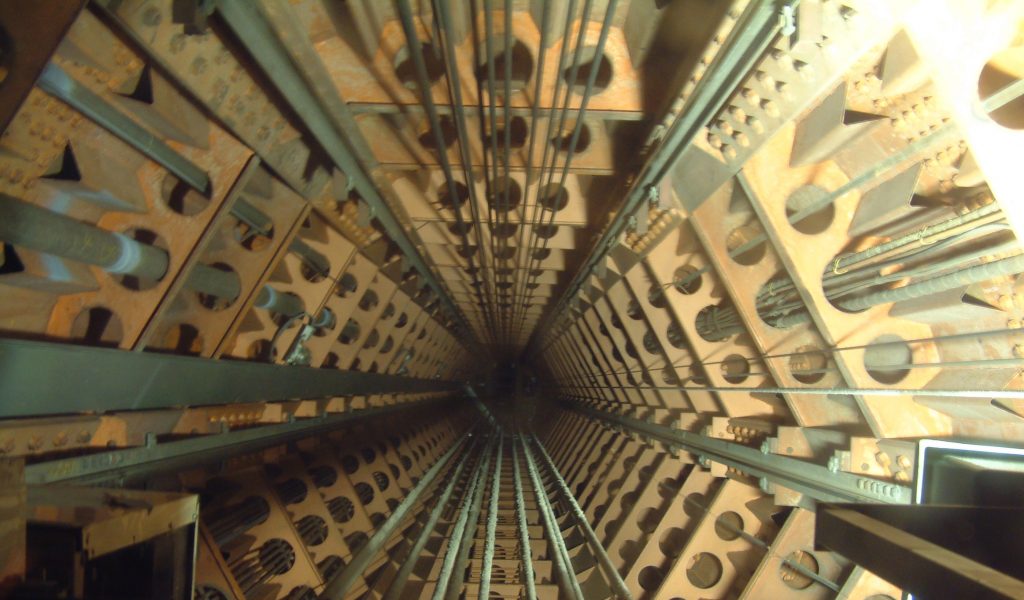- Working with Architecture
- Working in New York
- Munich Works
- Zurich Exhibitions
- Light art with LEDs
For more information:
For more information:
Howard Brandston (1935-2023) shares his memories about the lighting design pioneer Stanley McCandless. Stanley McCandless (1897-1967) received a degree in architecture from Harvard, taught at the Yale School of Drama and became a leading stage lighting designer. His book „A Method of Lighting the Stage” has laid a foundation for modern stage lighting. The McCandless Method has been used widely. McCandless founded his studio in 1933. Howard Brandston, an award-winning lighting designer, has realised many high-profile projects from the Statue of Liberty to the Petronas Towers in Kuala Lumpur, explains what he has learned from the innovative stage lighting designer.
Lighting Design Pioneers included in the interview
Seymour Evens was a genius salesman for lighting in New York in the 1950s and 1960s, explains Howard Brandston. Howard Brandston, an award-winning lighting designer, has realised many high-profile projects from the Statue of Liberty to the Petronas Towers in Kuala Lumpur, has worked at Seymour Evans.
Abe Feder (1910-1997) was a theatrical lighting designer and did architectural lighting design. He was involved in the lighting of 300 Broadway shows like “My Fair Lady” and “Camelot”. Abe Feder illuminated several architecture projects like offices, banks and concert halls and universities as well. Major lighting project were for example the RCA Building in Rockefeller Center and the Prometheus Fountain or the John F. Kennedy Center for the Performing Arts in Washington. Joseph Wechsberg wrote in the The New Yorker about Abe Feder in 1960: „ Feder plays with light as a composer plays with sound.” Abe Feder was a founding member of the International Association of Lighting Designers (IALD) in 1969.
John Flynn was the conscious of good lighting, explains Howard Brandston. John E. Flynn (1930- ) is a co-author of “Architectural Lighting Graphics” (1962), a reference book for lighting design. Flynn and his research group have published influential papers on the psychological effects of lighting in the 1970s. He taught at Penn State University 1973-1980.
Richard Kelly (1910-1977) has been considered as a pioneer for architectural lighting. He founded Richard Kelly Lighting Design in 1950. His lighting projects include Kimball Museum of Fine Arts, the Yale Center at British Art and Studies and the Seagram Building. Edison Price Lighting has manufactured innovative lighting fixtures since 1952. Together they were a strong team for architectural lighting. Richard Kelly was a founding member of the International Association of Lighting Designers (IALD) in 1969.
Bill Richardson was famous for theatre and hotel lighting in the 1950s and 1960s.
Lewis Smith (1904-1987) had an incredible knowledge of historic restoration and lighting fixtures. He designed lighting for the Cathedral of St. John the Divine in New York and the National Episcopal Cathedral in Washington as well as for several hotels. Lewis Smith Architectural Lighting was founded 1939. Lewis Smith was a founding member of the International Association of Lighting Designers (IALD) in 1969.
In this interview Howard Brandston talks about the lucky moments in his architectural lighting design career. He looks back to his two mentors: Gustav Blum, a theater director and teacher and Leon Freund, an artist and a teacher.
What are the intrinsic qualities of light, and how are the techniques and design approaches implemented in architecture? How are abstract lighting concepts conveyed, and how far is our perception of light rooted in the biological and cultural history of human evolution? This book endeavours to identify terms and stand-ards which relate to qualities in architectural lighting. It uses this identification to promote communication and aid dialogue between designers and engineers, building owners and planners, professionals and laymen. The 21 chapters are arranged in three sections cover-ing the actual qualities of light, the relation-ship between light and space and, finally, the dimension of light as it relates to culture. In each of the chapters, paired terms explore the respective design dimension of light. Using texts, photos, computer graphics and drawings, the team of authors investigates each pair of terms – beginning with the original cultural and historical context, moving onto didactic material on perception, lighting design and lighting technology and concluding with case studies in virtual architectural situations. (ERCO press release)
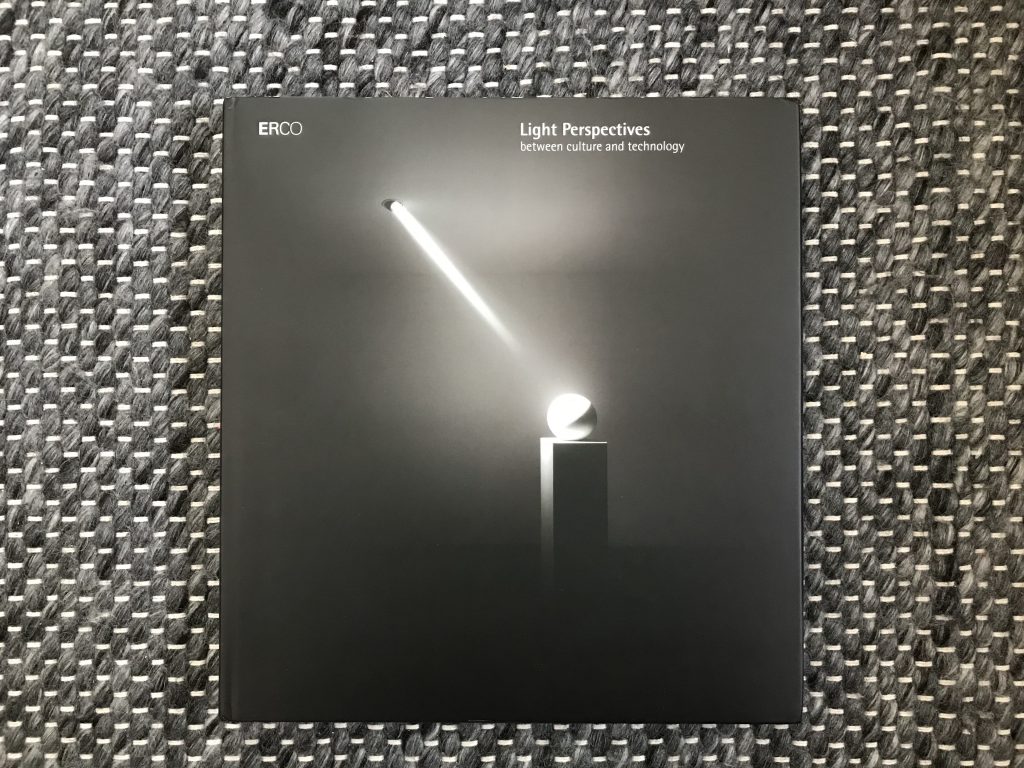
Light Perspectives
ISBN 978-3-9813216-1-6
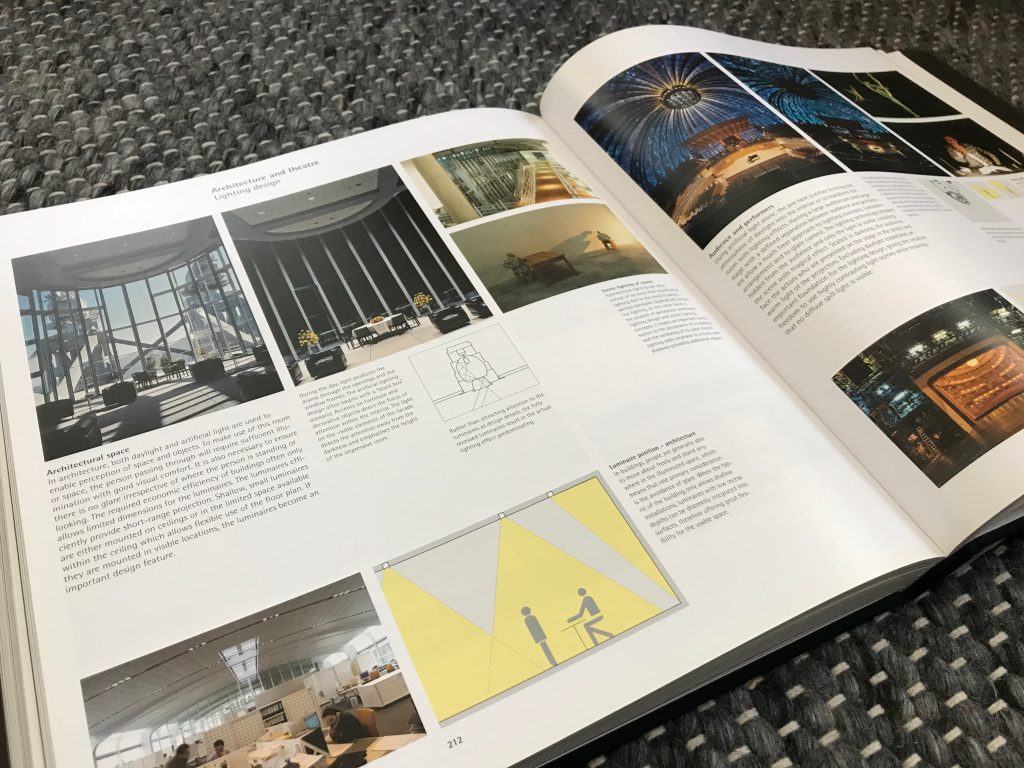
The start of Frame’s book series on architectural illumination and light installations.
Bright presents a rich selection of 38 innovative projects that are setting trends in the creative use of light. The included work has been implemented in both a commercial and cultural context around the world.
Each designer or design company is portrayed in an eight-page spread featuring both stunning photography and detailed text information. The book also includes a technical lighting guide. Bright is an up-to-date reference tool for professionals working in the fields of lighting design, architecture and art. The book reflects the role of illumination as a multifaceted and interactive design element. In doing so, Bright sheds new light on the future of architecture and design. (Frame press release)

By introducing the category of movement, New Move takes a new look at current issues in architecture. Adaptive building components and elements allow more flexible uses of facilities and to extend their function, to conserve and gain energy, and to initiate, display, and control interaction with users. Applications range from interiors and solar shading to facade and roof designs. The extended understanding of movement also includes concepts in urban design and other disciplines. New Move systematically explores background information, concepts, and functions in a large number of contributions. More than 50 case studies illustrate the various types of movement, such as swiveling and turning, rotating, sliding, and folding using built examples in contemporary high-profile international architecture.
Book available at:
De Gruyter
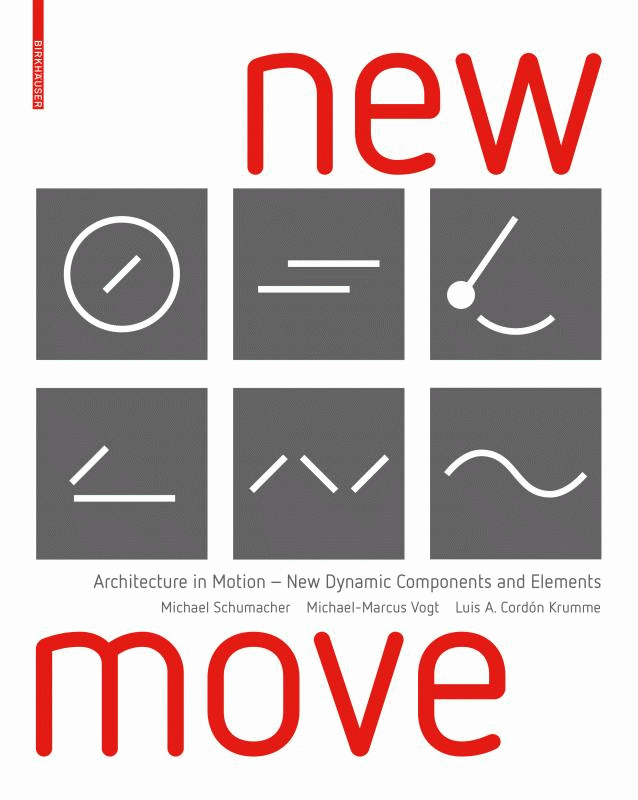

‘Smart Light’ is now a widely known term for the digital technologies and ecological ideas that are being creatively applied by designers to transform cities at night. This historic creative movement includes several revolutionary genres of dynamic public art, globally televised with the Smart Light festivals founded in Sydney (2009) and Singapore (2010).
SuperLux is the world’s first comprehensive monograph surveying recent smart light milestones and triumphs, using eco-ethical ideas and electroluminescent (efficient digital) systems for urban art, architecture and environmental design. The book contains more than 400 images of post-2008 examples of energy-effective light installations – illuminated buildings, bridges, streets, parks, plazas, media walls, public interiors, gallery spaces and water features, including interactions, videos screened across historic building facades and augmented reality games using mobile devices. There is also an illustrated timeline of historical achievements with luminous structures – using paint, perforations, projections and pixel screens.
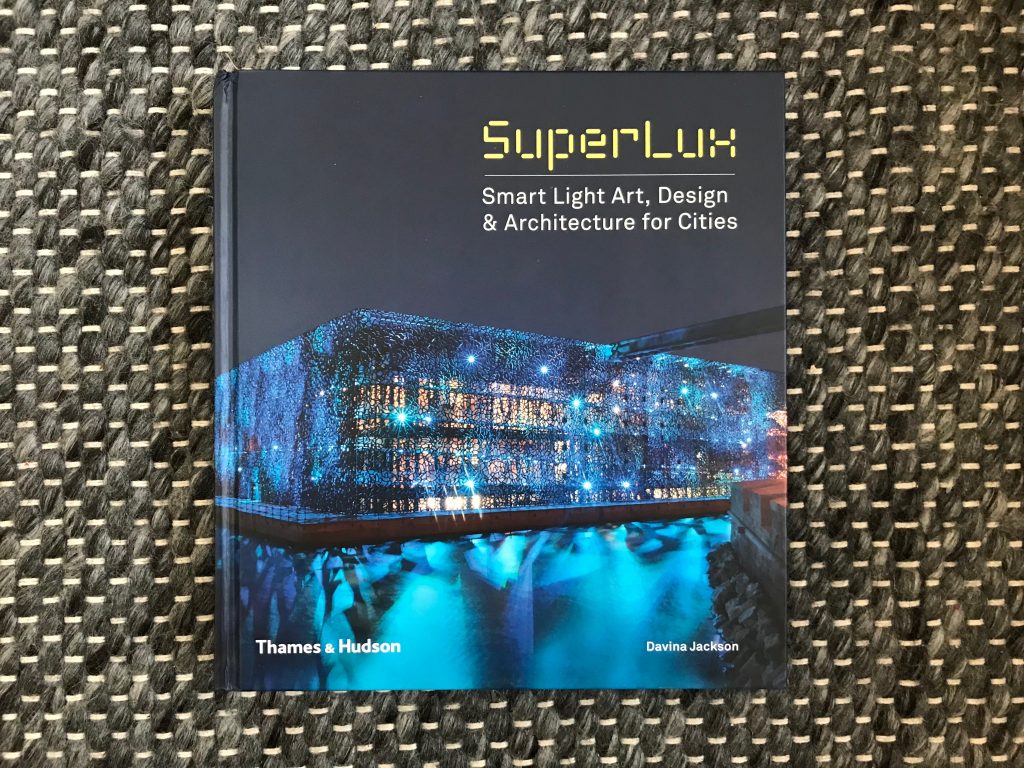
More than fifty public artworks, design installations and architectural-scale projects are presented in three main sections:
Punctuating the pictorial sections are nine ‘genre summaries’ by editor Davina Jackson; informative essays by European designer-scholars Mary-Anne Kyriakou, Vesna Petresin, Thomas Schielke and Peter Weibel; and an ecological critique by renewable energy expert, Peter Droege.
Reviews
Charts how buildings have been transformed from inefficient, light-polluting beacons to clean, high-concept aesthetic assets to urban space.
City AM
Celebrates the ingenuity and artistry of the emergent ‘smart light’ movement.
Architecture Today
Get your copy
Thames & Hudson
Explore more at the SuperLux website about the exhibtion and events.
Using example projects from Germany and abroad, the guide shows how urban lighting design can contribute to emphasising spatial qualities, highlighting urban-structural connections and thus shaping urban identity without losing sight of the aspects of safety and orientation. Design modules, methods and instruments for the planning and implementation of a lighting concept in cities and municipalities are presented.
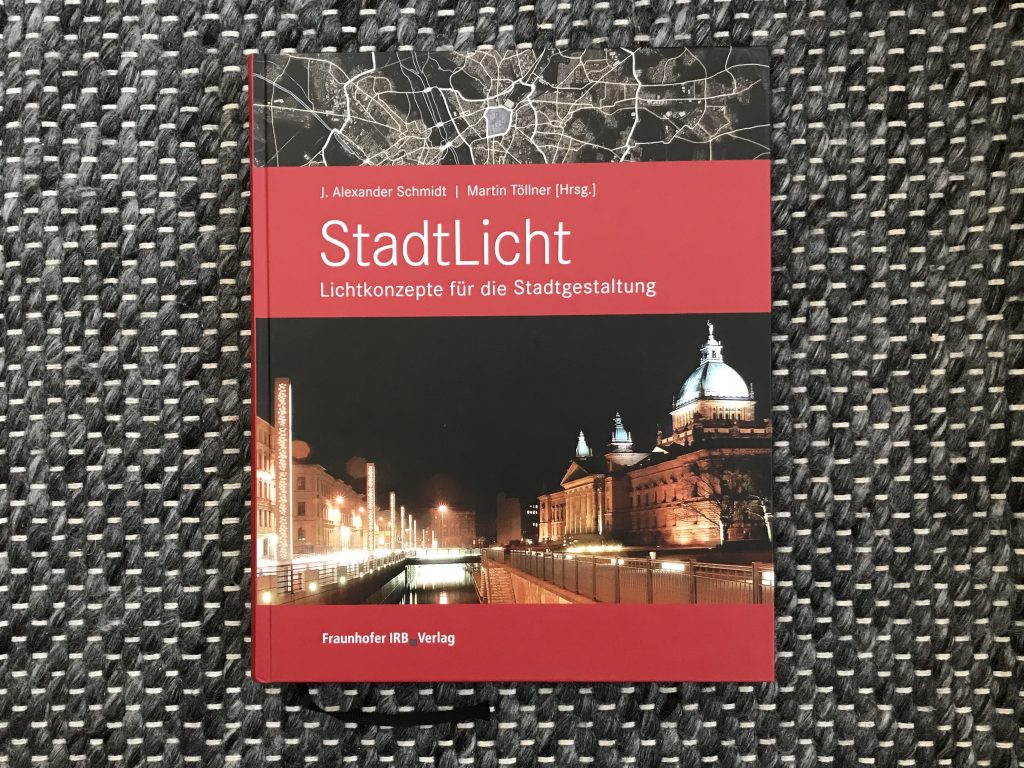
Pleasant and Inviting Circulation Areas
Staged paths and innovative floorplan concepts
“Infrastructure provision” doesn’t sound very interesting at first, more like the necessary evil of making building components and spaces accessible in the horizontal and vertical direction while taking into account a wide variety of requirements. That’s why the ever more frequently encountered fresh interpretations of this design task by architects who take it as the pivotal element of their concepts, resulting in surprising yet compelling space configurations, are even more interesting.
Spectacular lifts and escalators, unusual floor plan arrangements or stairway sculptures that define the space provide staging for the required pathways. Infrastructure takes on the characteristics of an amenity and becomes an exciting spatial experience as well as a crucial criterion of a successful design. The separation between infrastructure and space dissolves, because the infrastructure becomes a space of sojourn and communication.
The volume at hand, in accordance with the typological approach of the series, shows the entire spectrum of interesting options for infrastructure provision, starting with school construction – which, far from the “never-ending hallway” character, already seizes upon current work methods in the draft stage and enables future-oriented learning – and continuing on to innovative concepts for residential, cultural and transport facilities, the sporting and working worlds, and even landscape planning. Alongside these extensive project documentations that provide a great deal of inspiration and stimulate new ideas, theoretical contributions of renowned specialist authors illuminate the topic in addition to the planning basics in regard to route guidance, steering of visitor flows, orientation in space, accessibility for the disabled and the important task of light planning.
ISBN 978-3-920034-89-8

Museum design concepts, Brand presentation, Trade show design
From trade fair stands to museum concepts, the successful transfer of information to a wide public audience relies on effective staging and appropriate architectural design. While museum exhibitions focus on the art of communicating content, with commercial aspects tending to play a more subordinate role, the goal of trade fair stands and showrooms is to convey a brand image. And at least since large companies like BMW and Mercedes began introducing commercialized museum concepts designed to stage their brands, the phenomenon has come full circle. Not infrequently, planners today must not only accomplish the demanding task of designing an exhibition; they must also meet full service demands, from briefings and CI design to realization. How to do this successfully is the subject of short articles by authors from the relevant fields. With extensively documented project examples organized by presentation or exhibition type, these valuable technical articles offer a detailed roadmap to practical success.
ISBN English version: 3764399554
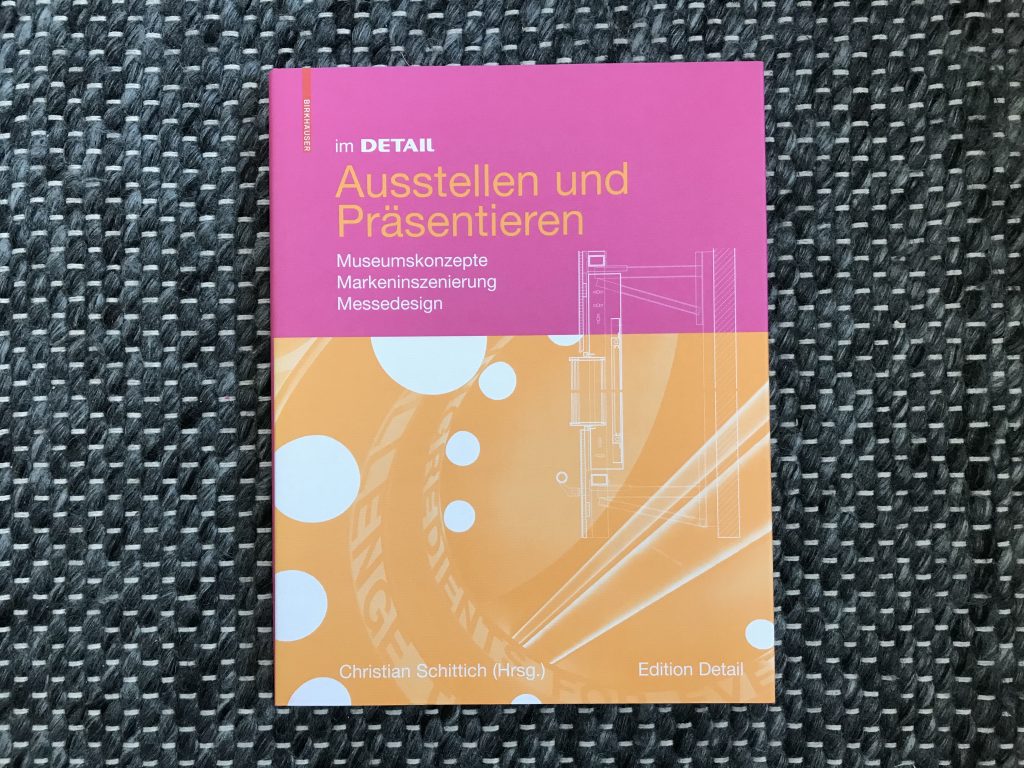
The lift as an entrance
Elevator technology has been perfected to such an extent that a ride in a lift has virtually no tangible side-effects. The elevator cabins, or cars, have become more compact to fit more effectively into buildings, but lighting can contribute towards rendering the dynamic quality of an elevator system more legible and enhancing the quality of the compact space as well as achieving more comfort for users.
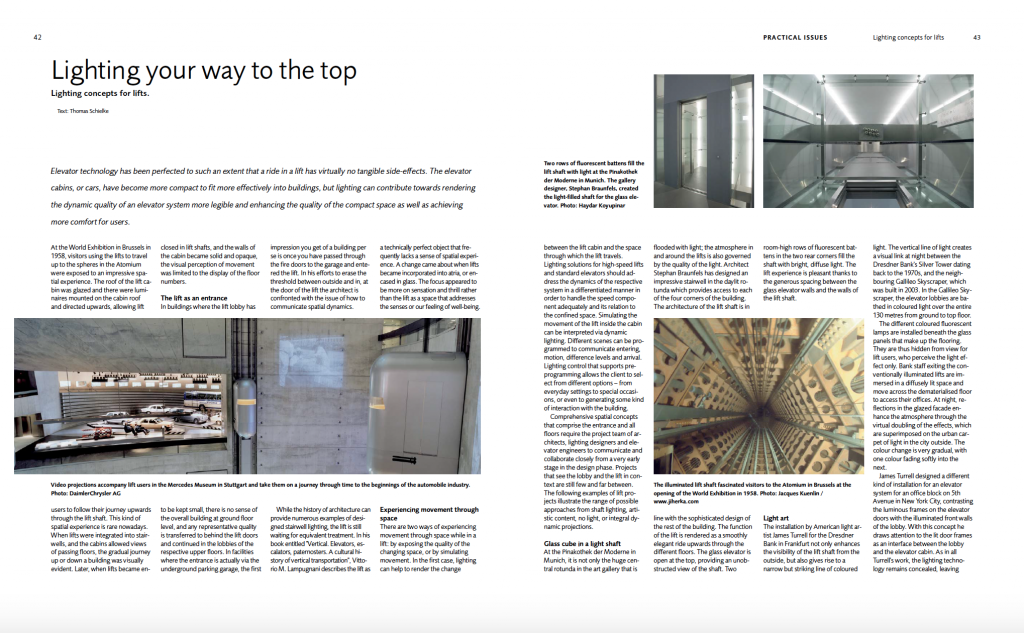
At the World Exhibition in Brussels in 1958, visitors using the lifts to travel up to the spheres in the Atomium were exposed to an impressive spa- tial experience. The roof of the lift ca- bin was glazed and there were lumi- naires mounted on the cabin roof and directed upwards, allowing lift users to follow their journey upwards through the lift shaft. This kind of spatial experience is rare nowadays. When lifts were integrated into stair- wells, and the cabins allowed views of passing floors, the gradual journey up or down a building was visually evident. Later, when lifts became enclosed in lift shafts, and the walls of the cabin became solid and opaque, the visual perception of movement was limited to the display of the floor numbers.

Publications
